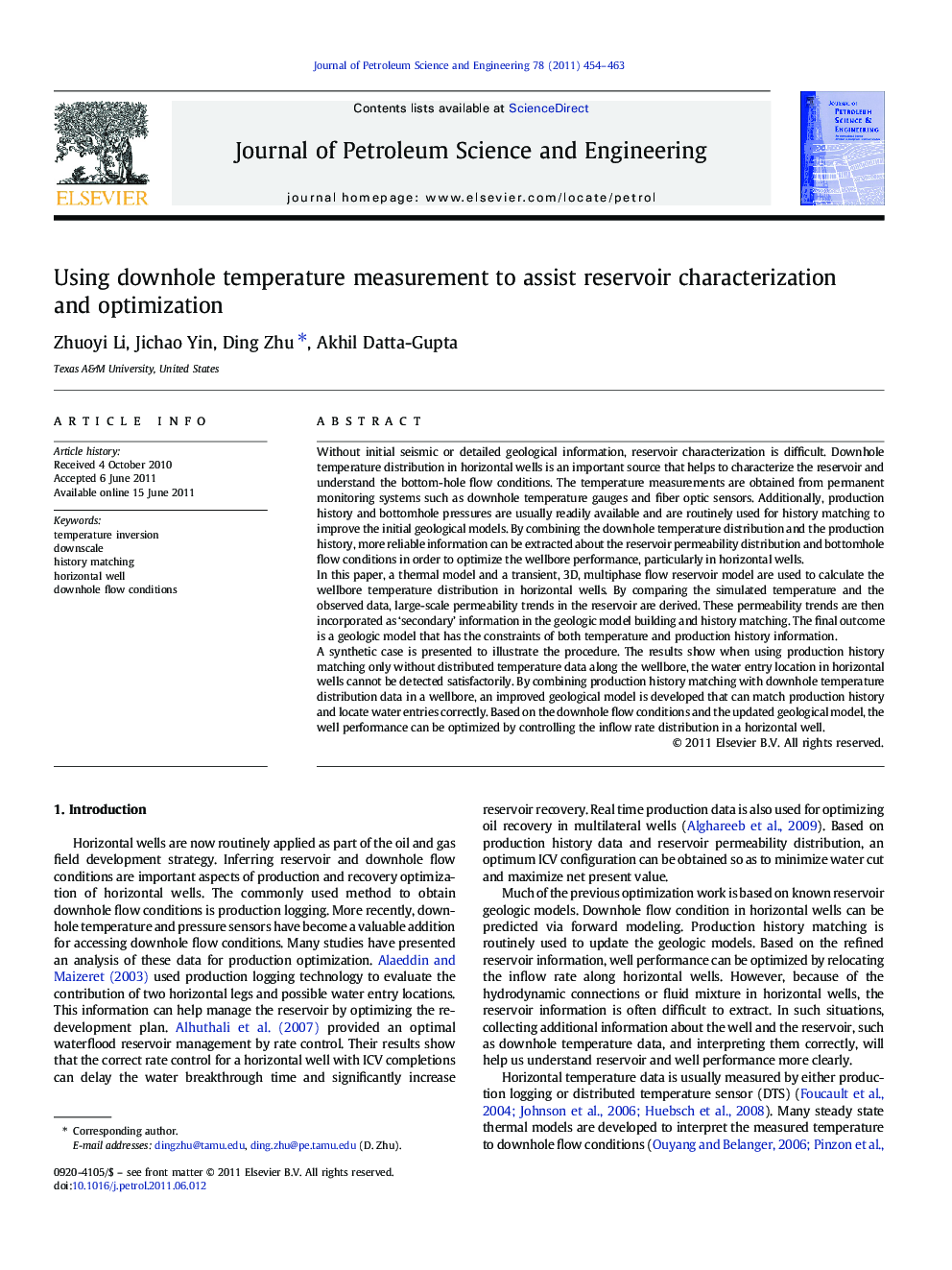| کد مقاله | کد نشریه | سال انتشار | مقاله انگلیسی | نسخه تمام متن |
|---|---|---|---|---|
| 1755647 | 1018904 | 2011 | 10 صفحه PDF | دانلود رایگان |

Without initial seismic or detailed geological information, reservoir characterization is difficult. Downhole temperature distribution in horizontal wells is an important source that helps to characterize the reservoir and understand the bottom-hole flow conditions. The temperature measurements are obtained from permanent monitoring systems such as downhole temperature gauges and fiber optic sensors. Additionally, production history and bottomhole pressures are usually readily available and are routinely used for history matching to improve the initial geological models. By combining the downhole temperature distribution and the production history, more reliable information can be extracted about the reservoir permeability distribution and bottomhole flow conditions in order to optimize the wellbore performance, particularly in horizontal wells.In this paper, a thermal model and a transient, 3D, multiphase flow reservoir model are used to calculate the wellbore temperature distribution in horizontal wells. By comparing the simulated temperature and the observed data, large-scale permeability trends in the reservoir are derived. These permeability trends are then incorporated as ‘secondary’ information in the geologic model building and history matching. The final outcome is a geologic model that has the constraints of both temperature and production history information.A synthetic case is presented to illustrate the procedure. The results show when using production history matching only without distributed temperature data along the wellbore, the water entry location in horizontal wells cannot be detected satisfactorily. By combining production history matching with downhole temperature distribution data in a wellbore, an improved geological model is developed that can match production history and locate water entries correctly. Based on the downhole flow conditions and the updated geological model, the well performance can be optimized by controlling the inflow rate distribution in a horizontal well.
► Forward model simulate temperature and flow for 3D/multiphase in horizontal wells.
► Inversion translates temperature and production history to flow profile by forward model.
► Update geological model and flow distribution and optimize production performance.
Journal: Journal of Petroleum Science and Engineering - Volume 78, Issue 2, August 2011, Pages 454–463